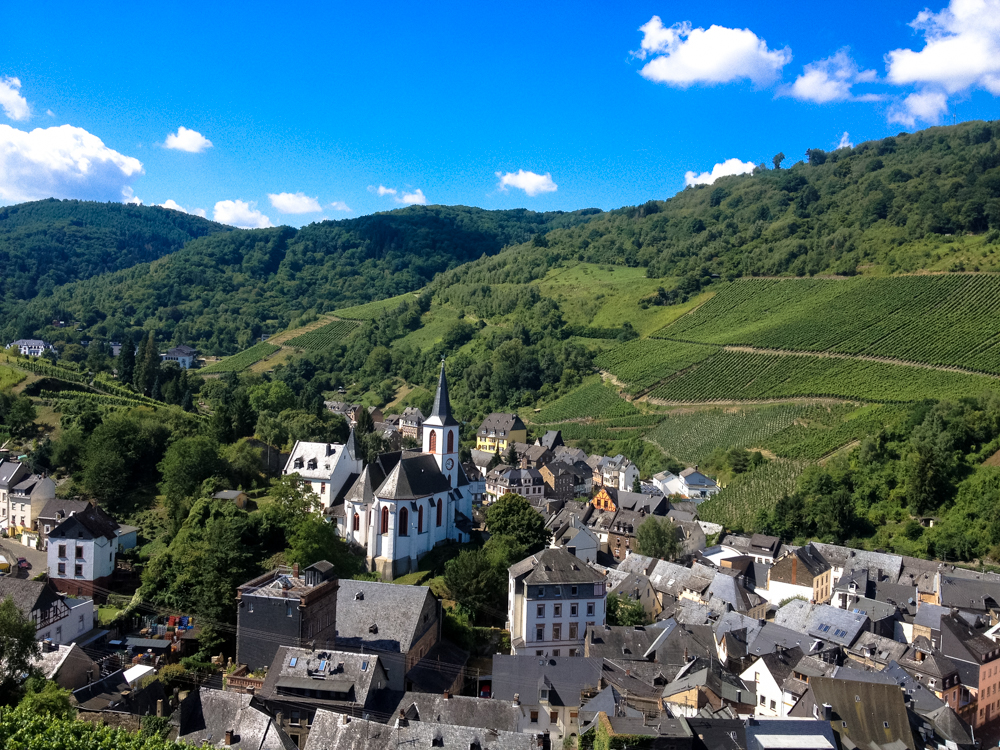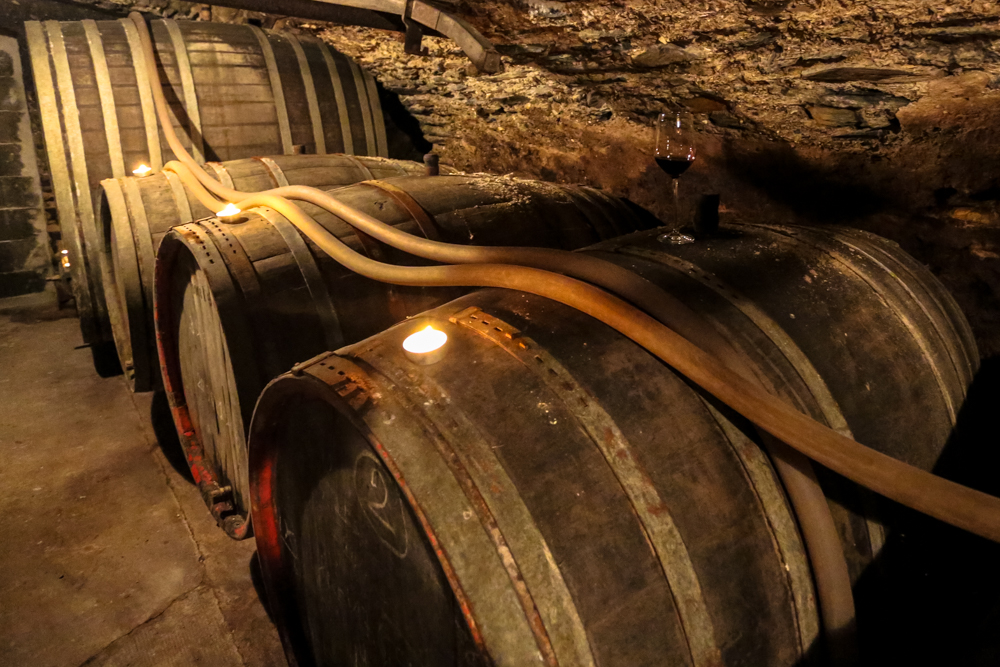
In the villa, living and working took place under the same roof in former days. Stocks were lifted through the hatch and stored in the attic. Old flagpoles in the colours of the German Revolution of 1848 still linger between the collar beams. Under the vaulted ceiling the wine matured in wooden barrels. By the end of the winter the bottling took place.
Life was lived on the three spacious floors between cellar and attic. This is where major family events were celebrated. Such events always gave good cause for some restyling and redesign. As was the case in the sixties, for the occasion of the wedding of the son of the house when the wallpapers in the suite rooms were replaced by stately white striped tapestry with golden lilys. It would last for almost fifty years. When we removed the weary yellowed wallpaper recently, three consecutive layers from even more bygone times appeared. They had beautiful designs in purple, blue and green. Eventually, under these last of these layers, newspapers from 1895 were hidden. Thus, the building year of the house could be determined. Large cupboards, whose existence had been unknown even to the family who had been living there for so long, were also discovered. Under the linoleum carpet in one of the other rooms more recent papers from 1967 were found. We framed one of the pages showing trendy ladies’ fashion of that time.

While life in the winery had its own pace, the storms of German history passed by, and sometimes history dropped in. Immediately after the Second World War a French officer and his family were quartered on the ground floor. Christian Wilhelm Niessen, the owner of the winery, was appointed juge de paix by the French occupation authorities. He pursued his office between the double doors of the suite rooms and administered justice au nom de la République during the years of the French occupation, until Germany was allowed to stand on its own two feet again in 1949.
Soon the Wirtschafswunder and trips to Italy and Spain announced themselves. In the end, for the new generations, the winemaking business was deemed a hobby alongside the academic profession. Focus changed. But the wooden floors, the chandeliers and the cast iron radiators survived the eras. Even today, they dissipate a familiar feeling of homeliness, together with the furniture collected by successive generations.

